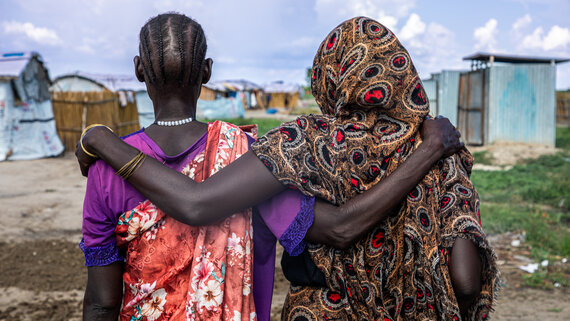CCCM Sectoral People in Needs
CCCM Sectoral Severity of Needs
Needs
As of September 2023, over 908,800 people remain in 142 formal and informal displacement sites, predominantly in Unity, Upper Nile, and Central Equatoria states. These individuals face extreme vulnerability due to the lack of viable alternatives. Self-settled, unplanned IDP sites, often overlooked and underserved, pose an even greater risk of exclusion from essential services. In 2023, 58 percent of displacement sites (hosting over 327,000 people) did not receive Camp Coordination and Camp Management (CCCM) support. This resulted in limited access to coordinated services, community support, information, or site maintenance.
Additionally, over 400,000 projected returnees from Sudan in 2024 will need CCCM assistance in the transit and reception centers near the Sudan border. Based on monthly site verifications, the CCCM cluster anticipates that around 20 percent of these returnees will settle in existing IDP sites throughout the country. This highlights the critical role of CCCM support in addressing the needs of both IDPs and returnees to ensure their access to life-saving assistance and protection. Integrating these additional returnees in existing IDP sites will require significant efforts to provide decent living conditions, protection, and humanitarian assistance. Coordination and resources will play a pivotal role in addressing the challenges presented by this evolving situation.
CCCM Sectoral People Targeted
Response
In 2024, the CCCM cluster is committed to addressing the needs of IDPs living in the most underserved sites, regardless of their geographical location. With the incorporation of Phase 1 of the Emergency Response Plan for the Sudan Crisis into the 2024 HRP, the scope of the response will expand to cover transit and reception centers near the Sudan border. If needed, this expansion includes provisions for establishing new high-capacity transit centers in northwest locations. The cluster's primary focus remains ensuring safe access to services and protection for IDPs.
The cluster will employ area-based and roving response strategies to reach underserved sites, working through localized response and coordination structures to access hard-to-reach areas. This approach identifies common needs among sites in close proximity and links site populations with available services. Mobile response will continue to be a short-term emergency response approach to new
displacements.
In sites where CCCM presence is already established, partners will explore strategies for transitioning site management responsibilities to community self-governance structures, such as Camp Management Committees and the Government Relief and Rehabilitation Commission (RRC).
Moreover, the cluster will leverage its role as an intermediary between service providers, IDPs, resident communities, and government authorities to facilitate effective and sustainable solutions. As a cross-cutting sector, CCCM is well-positioned to address the multidimensional needs of IDPs, promote comprehensive and durable solutions, and ensure that the needs and intentions of IDPs are integrated into planning, implementation, and decision-making processes. Regularly deploying the comprehensive site profiling tool will provide site-specific information essential for solutions programming, benefiting a range of partners working through the nexus approach.

Bentiu IDP site, Unity State, South Sudan
Women displaced by floods and conflict in Bentiu IDP site.
OCHA/Alioune NdiayeMonitoring
The CCCM Cluster monitors the situation in IDP sites through its sub-national state focal points and network of partners. It interacts regularly with a wide range of stakeholders, including the ICCG, national actors, and the RRC. The cluster supports evidence-based response modalities through a robust information management and data collection system. Perception surveys related to key AAP outcome indicators, disaggregated by gender, age, and specific needs, will inform decision-making on priority needs, response, and implementation gaps.
The detailed cluster strategy can be found online https://reliefweb.int/report/south-sudan/south-sudan-cccm-cluster-strategy-2023-2025

